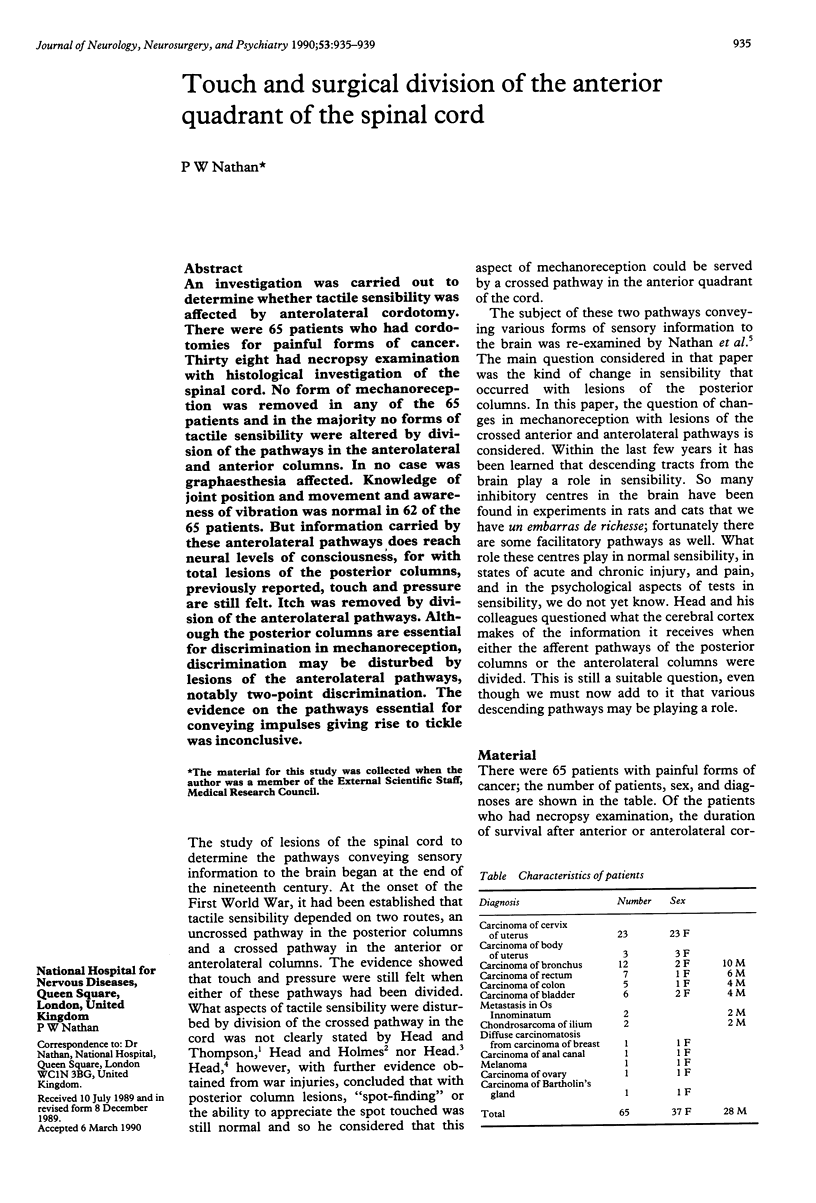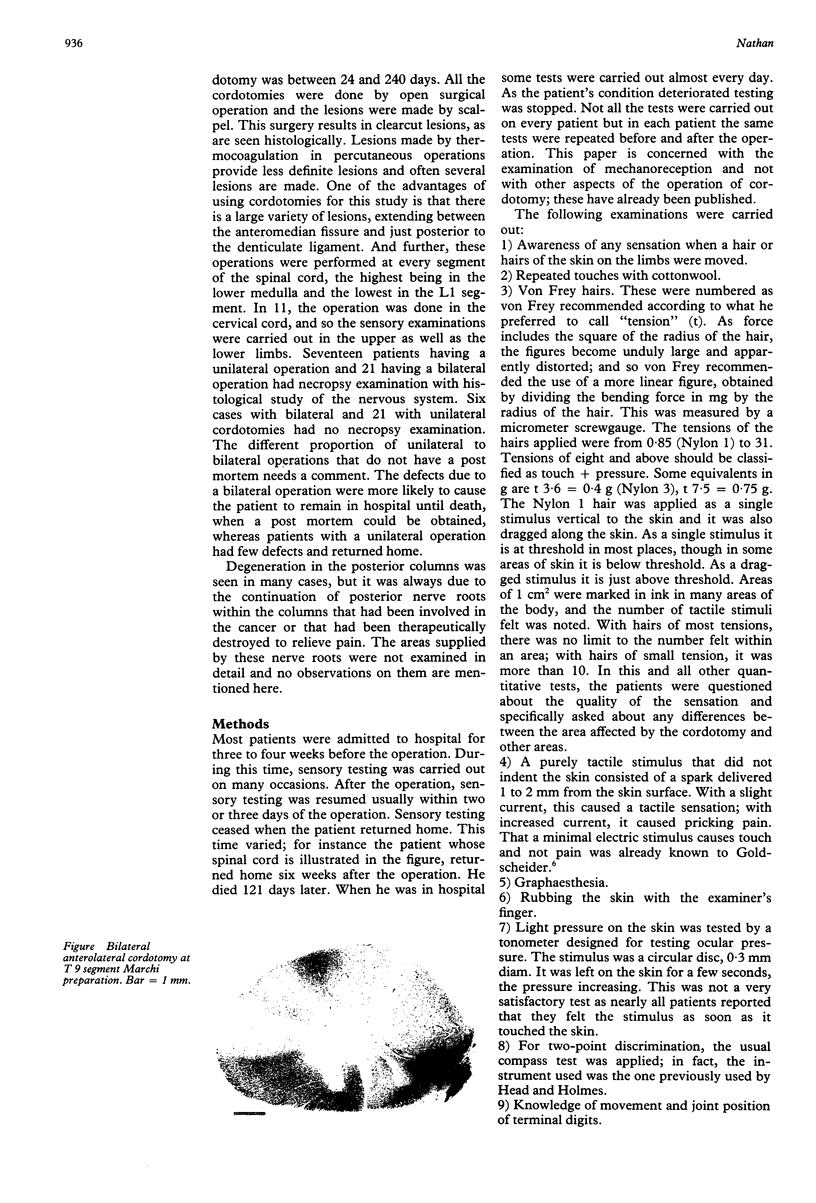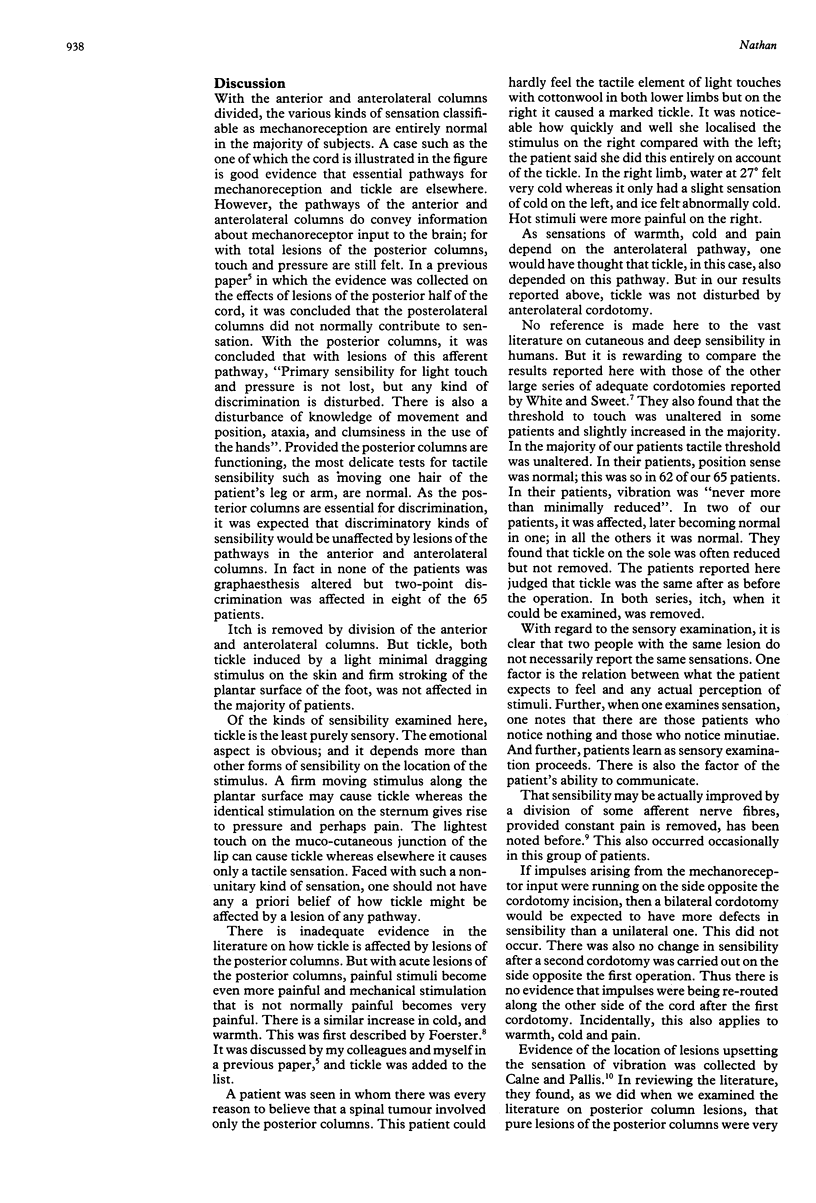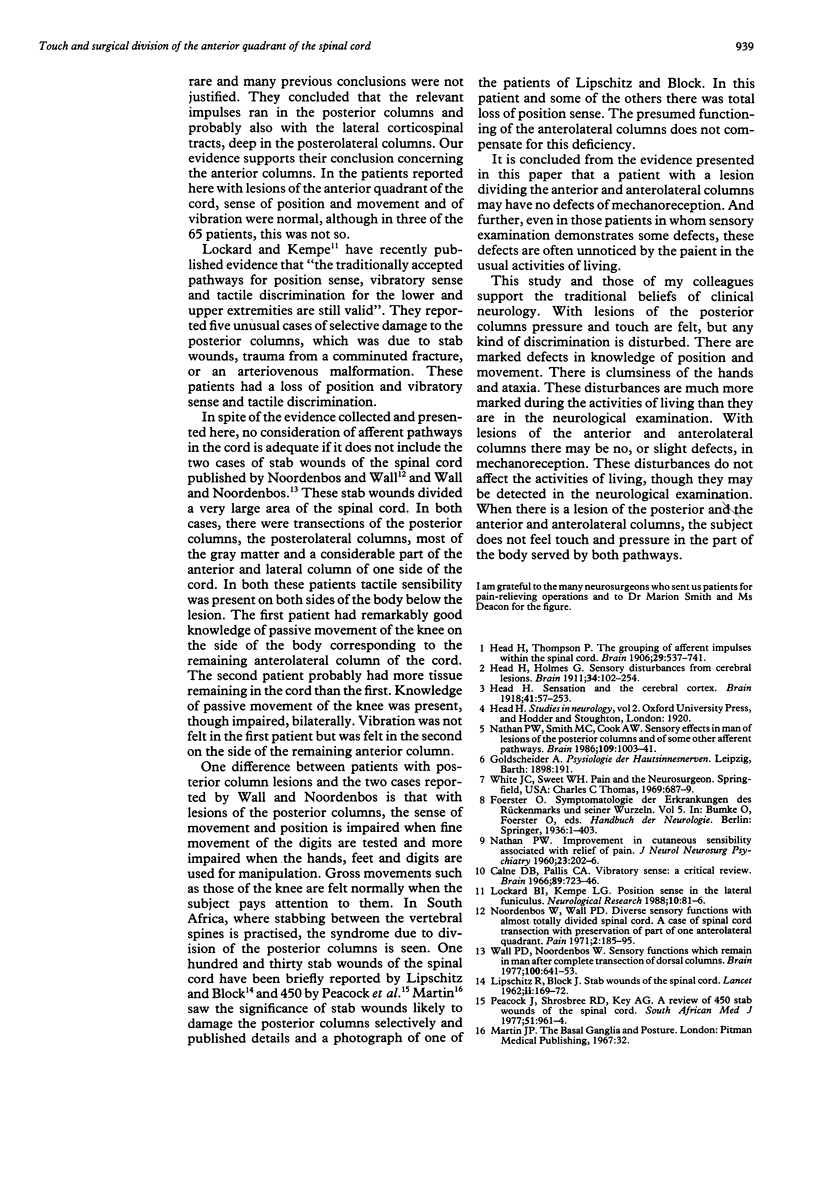Abstract
An investigation was carried out to determine whether tactile sensibility was affected by anterolateral cordotomy. There were 65 patients who had cordotomies for painful forms of cancer. Thirty eight had necropsy examination with histological investigation of the spinal cord. No form of mechanoreception was removed in any of the 65 patients and in the majority no forms of tactile sensibility were altered by division of the pathways in the anterolateral and anterior columns. In no case was graphaesthesia affected. Knowledge of joint position and movement and awareness of vibration was normal in 62 of the 65 patients. But information carried by these anterolateral pathways does reach neural levels of consciousness, for with total lesions of the posterior columns, previously reported, touch and pressure are still felt. Itch was removed by division of the anterolateral pathways. Although the posterior columns are essential for discrimination in mechanoreception, discrimination may be disturbed by lesions of the anterolateral pathways, notably two-point discrimination. The evidence on the pathways essential for conveying impulses giving rise to tickle was inconclusive.
Full text
PDF




Images in this article
Selected References
These references are in PubMed. This may not be the complete list of references from this article.
- Calne D. B., Pallis C. A. Vibratory sense: a critical review. Brain. 1966 Dec;89(4):723–746. doi: 10.1093/brain/89.4.723. [DOI] [PubMed] [Google Scholar]
- LIPSCHITZ R., BLOCK J. Stab wounds of the spinal cord. Lancet. 1962 Jul 28;2(7248):169–172. doi: 10.1016/s0140-6736(62)90054-5. [DOI] [PubMed] [Google Scholar]
- Lockard B. I., Kempe L. G. Position sense in the lateral funiculus? Neurol Res. 1988 Jun;10(2):81–86. doi: 10.1080/01616412.1988.11739820. [DOI] [PubMed] [Google Scholar]
- NATHAN P. W. Improvement in cutaneous sensibility associated with relief of pain. J Neurol Neurosurg Psychiatry. 1960 Aug;23:202–206. doi: 10.1136/jnnp.23.3.202. [DOI] [PMC free article] [PubMed] [Google Scholar]
- Nathan P. W., Smith M. C., Cook A. W. Sensory effects in man of lesions of the posterior columns and of some other afferent pathways. Brain. 1986 Oct;109(Pt 5):1003–1041. doi: 10.1093/brain/109.5.1003. [DOI] [PubMed] [Google Scholar]
- Noordenobos W., Wall P. D. Diverse sensory functions with an almost totally divided spinal cord. A case of spinal cord transection with preservation of part of one anterolateral quadrant. Pain. 1976 Jun;2(2):185–195. doi: 10.1016/0304-3959(76)90114-7. [DOI] [PubMed] [Google Scholar]
- Peacock W. J., Shrosbree R. D., Key A. G. A review of 450 stabwounds of the spinal cord. S Afr Med J. 1977 Jun 25;51(26):961–964. [PubMed] [Google Scholar]
- Wall P. D., Noordenbos W. Sensory functions which remain in man after complete transection of dorsal columns. Brain. 1977 Dec;100(4):641–653. doi: 10.1093/brain/100.4.641. [DOI] [PubMed] [Google Scholar]



